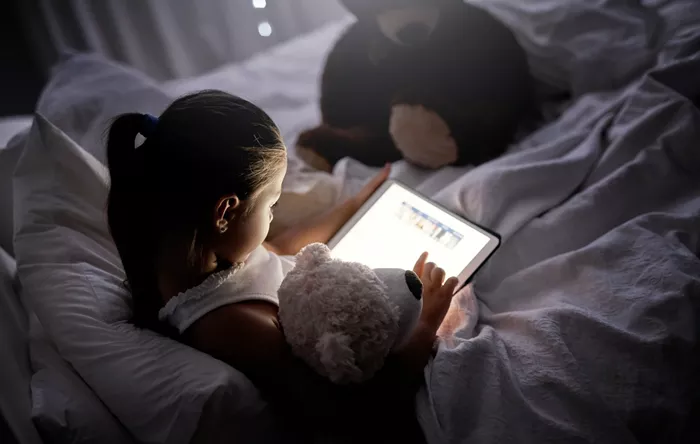Getting enough high-quality sleep is essential for good health, yet many adults fail to meet the recommended seven to nine hours per night. One-third of adults fall short of these guidelines, leading to widespread sleep issues.
The retina contains light-sensitive cells that regulate melatonin production, a hormone that promotes sleep. Darkness triggers melatonin release, while exposure to bright light—especially before bed—delays its production. This disruption prolongs the time it takes to fall asleep and throws off the body’s internal clock.
Smartphones and Sleep Disruptions
Smartphones and other electronic devices use LED screens that emit blue light, which peaks at 450 nm. This wavelength is known to negatively affect sleep by delaying melatonin release. People who frequently use screens before bed are at a higher risk of sleep disturbances.
Most studies on this issue have focused on adolescents and young adults, as they are heavy technology users. However, since adolescents are less sensitive to light-induced sleep disruption, it is important to study screen use’s effects across different age groups.
Study Overview
Researchers analyzed data from the American Cancer Society’s Cancer Prevention Study-3 (CPS-3) to examine the effects of electronic screen use before sleep. The study included men and women from 35 U.S. states and Puerto Rico.
Participants self-reported their sleep habits, including how often they used electronic screens—such as smartphones, laptops, and tablets—before bed. The study excluded TV use. Researchers collected data on bedtime, wake time, and sleep duration on workdays and weekends. Sleep quality was measured using the Pittsburgh Sleep Quality Index, while chronotype was determined using the Horne-Östberg Morningness-Eveningness Questionnaire. A Poisson regression model was used to analyze the impact of screen use on sleep.
Key Findings
The study included 122,058 participants, with a median age of 56. Most participants (89%) were White, 58% had a college degree, and 80% were women. About 58% were classified as morning chronotypes. Only 6% used an eye mask for sleep, and 81% reported their bedrooms were dark enough to prevent visibility across the room.
Over 41% of participants used an electronic screen before bed every night, while others used them occasionally or not at all. Non-users were more likely to be men or over 60 years old.
Daily screen users slept an average of 7.78 fewer minutes per night compared to non-users. They also went to bed about 19 minutes later on workdays, with varying patterns on weekends. Screen use before sleep was linked to a 26% increased risk of self-reported poor sleep quality. Fully adjusted models showed that daily screen users went to bed nearly 19 minutes later on both workdays and weekends. Among daily users, 33% reported poor sleep quality compared to non-users.
Morning chronotypes tended to go to bed 34 minutes earlier than evening chronotypes, who experienced more significant sleep disruptions.
Conclusion
Daily electronic screen use before bed leads to about 48 fewer minutes of sleep each week. People with later chronotypes are particularly vulnerable to poor sleep quality. More research is needed to understand the biological mechanisms behind screen-induced sleep disturbances and explore possible solutions.
Related topics:


